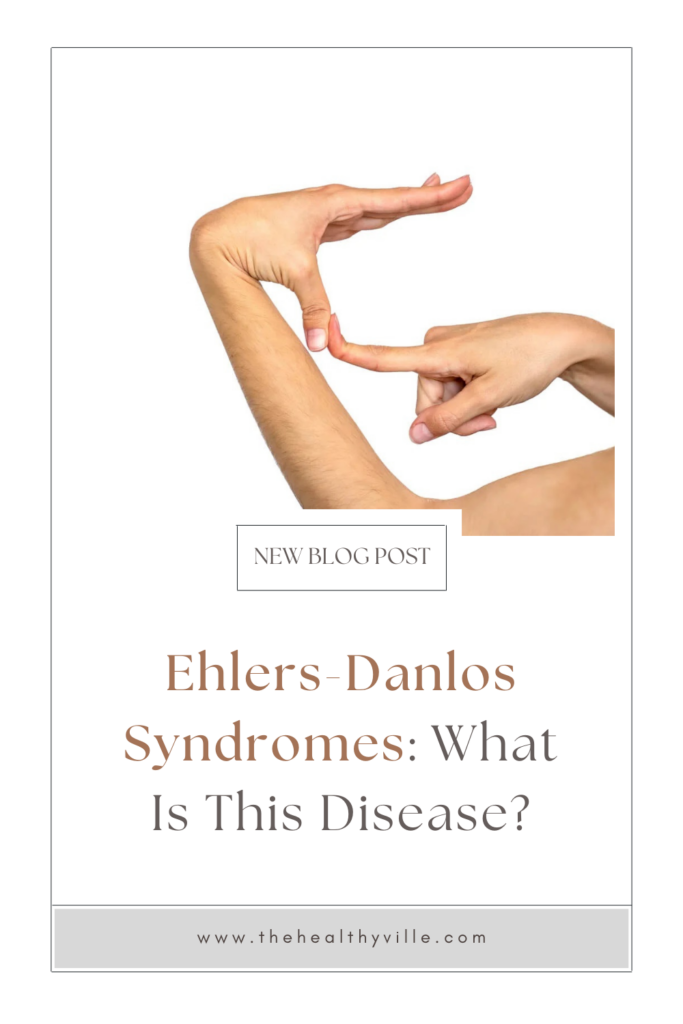Ehlers-Danlos syndromes can be several, and while they are all rare, there is no cure for them. Find out all about them.
Hereditary diseases affect millions of people worldwide. Unfortunately, there are pathologies such as Ehlers-Danlos syndrome, which are very rare and have no definitive cure.
Ehlers-Danlos syndromes
Ehlers-Danlos syndrome constitutes a wide range of inherited connective tissue disorders. It represents a rare entity worldwide, whose first clinical description was made in 1892.
This pathology groups a set of conditions characterized by an increase in the elasticity and flexibility of the joints. In addition, most patients have hyperelasticity of the skin and easy rupture of small blood vessels. Studies estimate a prevalence of 1 in 5,000 to 1 in 10,000 people worldwide.
Currently, about 13 types of Ehlers-Danlos syndrome and more than 19 genes involved in the development of this condition have been described. Diagnosis is based on detailed clinical examination and the use of genetic and biochemical tests.
Causes of Ehlers-Danlos syndromes
Connective tissue is a complex network of collagen and other types of proteins that provide both elasticity and strength to the organs and tissues of the human body. In this sense, Ehlers-Danlos syndrome is the result of modifications in collagen molecules due to alterations in the genes involved in its synthesis.
Collagen defects or its deficiency condition various conditions in the joints, bones and blood vessels. Research confirms that Ehlers-Danlos syndrome tends to be inherited in an autosomal dominant pattern, with the classic type being the most common, with a 35% prevalence among the others.
There are several mutations associated with the development of this pathology. However, detection of the genetic defect is difficult. The COL5A1, TNXB, COL5A2, ADAMTS2, COL1A2, COL3A1, COL1A1, and PLOD1 genes are some of those involved.
Symptoms
The clinical manifestations of this entity vary according to the variant of the syndrome and its severity. In general, people tend to have mild symptoms, while others have serious conditions with a high risk of death.
The main signs associated with Ehlers-Danlos syndrome are the following:
- Elastic and hypermobile joints.
- Pain and cracking in the joints.
- Frequent joint dislocations.
- Elastic, soft and velvety skin.
- Slow healing of wounds.
- Fragile skin with a tendency to bruise.
Similarly, some people may have chronic bone and muscle pain, as well as visual problems. In rare cases, back pain, decreased muscle tone, flat feet, and gum disease may be present.
Possible complications
The complications of Ehlers-Danlos syndrome are very varied and are associated with the structural deficit of the connective tissue. In general, they tend to present in the long term, especially in patients who are not diagnosed and treated in time.
Among the complications related to this disease are the following:
- Early-onset arthritis.
- Joint dislocation.
- Aortic aneurysm rupture.
- Early onset of labor during pregnancy.
- Mitral valve prolapse.
- Muscular atrophy.
How to diagnose it?
In most cases, identification of Ehlers-Danlos syndrome is based on data obtained through detailed clinical evaluation. The doctor will look for warning signs that indicate this pathology during the physical examination, such as hypermobile joints and elastic skin.
Of course, family history is a paramount. In addition, doctors can confirm variants like vascular, arthrochalasia, and hypermobile through genetic analysis.
Other methods that can be performed are the following:
- Skin biopsy for collagen typing.
- Lysyl hydroxylase enzyme activity.
- Echocardiography looking for cardiovascular complications.
Treatment
Unfortunately, there is no definitive cure for Ehlers-Danlos syndrome. The treatment aims at relieving the symptoms in each person, as well as avoiding future complications. Recommendations are active rest and avoidance of overextension of the joints during acute episodes.
You can manage pain by short-term administration of nonsteroidal anti-inflammatory drugs (NSAIDs), such as ibuprofen and naproxen. In addition, muscle relaxants are of great help, as well as steroid infiltration in case of bursitis or associated tendinitis.
On the other hand, physiotherapy provides great relief in the control of long-term joint conditions. Research recommends the use of magnesium and multivitamins in the prevention of muscle cramps and the control of the fragility of blood vessels.
How to live with a Ehlers-Danlos syndrome?
People with Ehlers-Danlos syndrome have mild symptoms they can relieve with small lifestyle changes. In this sense, it is key to know all the details about the disease, as well as to have the support of family and friends.
In the same way, it is necessary to maintain an adequate habit of exercise of mild to moderate intensity. Some of the most recommended sports activities are yoga, walking, swimming and cycling. Also, people should avoid contact sports and weight lifting as they increase the risk of injury.
Doctors advise wearing shoes with good support in order to prevent dislocations or sprains. On the other hand, mandibular protection is essential, avoiding chewing gum, ice and very crunchy foods. In addition, ensure adequate rest, using body pillows and foam mattresses.
Any unusual symptoms or intensification of known conditions should seek medical attention. Health professionals are the only ones who have the training to provide the proper treatment and guidance for recovery.
Don’t forget to SHARE everything about Ehlers-Danlos syndromes with your friends and family on your social networks!

